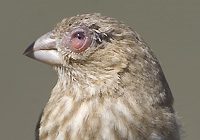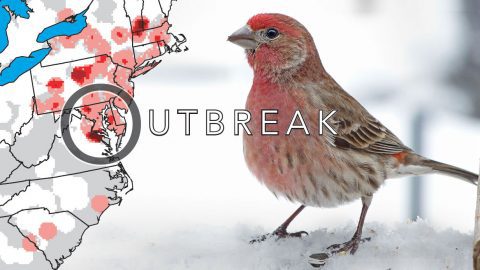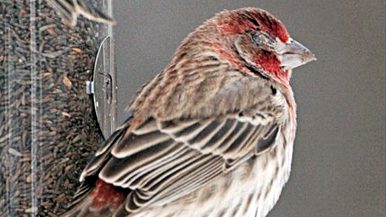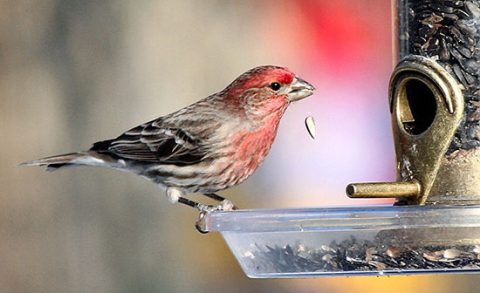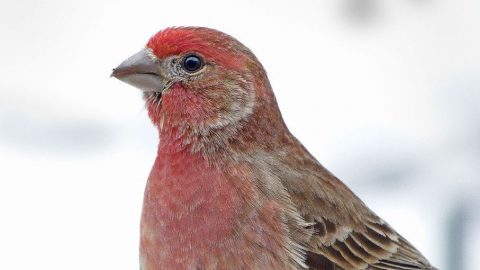Help Us Track Sick Birds With Project FeederWatch
November 1, 2018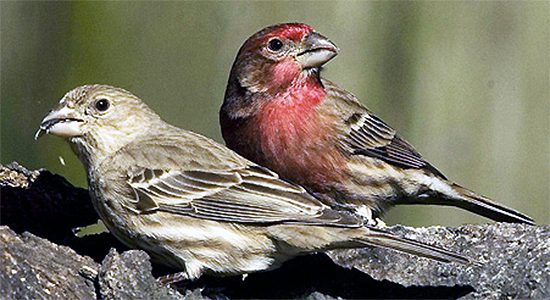
House Finches may be found at feeders across much of North America, and if you see these little birds, we’d like to know about it. Specifically, our scientists want to know if the birds you see appear healthy or if they have redness and swelling around the eyes—signs of a bacterial disease (Mycoplasma gallisepticum) that first appeared in 1994 and is now found in House Finch populations from coast to coast.
This special push to track both sick and healthy House Finches is being carried out through the Cornell Lab’s Project FeederWatch, an annual winter survey of feeder birds that runs from November through April. New participants are invited to sign up to help on the Project FeederWatch website. Making the correct ID is important, so there’s additional help provided in distinguishing among similar species, such as the Purple Finch, House Finch, and Cassin’s Finch.
“House finches are providing a unique window into disease dynamics,” says Wesley Hochachka, Assistant Director of Bird Populations Studies at the Cornell Lab of Ornithology. “We want to understand how this disease is spreading, if cases are more or less severe than they used to be, and how the birds’ immune systems are adapting to fight this threat.” Though this disease does not affect people, understanding how it’s transmitted provides insight into how human diseases are spread.
House Finch eye disease first appeared in the eastern United States and arrived in parts of the West in 2003. There is evidence suggesting that western bacteria could cause more severe disease now than in the past.
“Collecting reports from western states is especially important because the disease is still spreading there,” says FeederWatch project leader Emma Greig. “We hope to encourage participation in states such as Utah, Colorado, and Nevada, because the data they provide are extremely valuable.”
Learn more about FeederWatch and sign up online or call the Cornell Lab toll-free at (866) 989-2473. In return for a small fee, participants receive the FeederWatcher Handbook and Instructions with tips on how to attract birds to your feeders, an identification poster of common feeder birds, and a calendar. Participants also receive Winter Bird Highlights, an annual summary of FeederWatch findings.
Project FeederWatch is a joint research and education project of the Cornell Lab of Ornithology and Bird Studies Canada.

All About Birds
is a free resource
Available for everyone,
funded by donors like you
American Kestrel by Blair Dudeck / Macaulay Library

